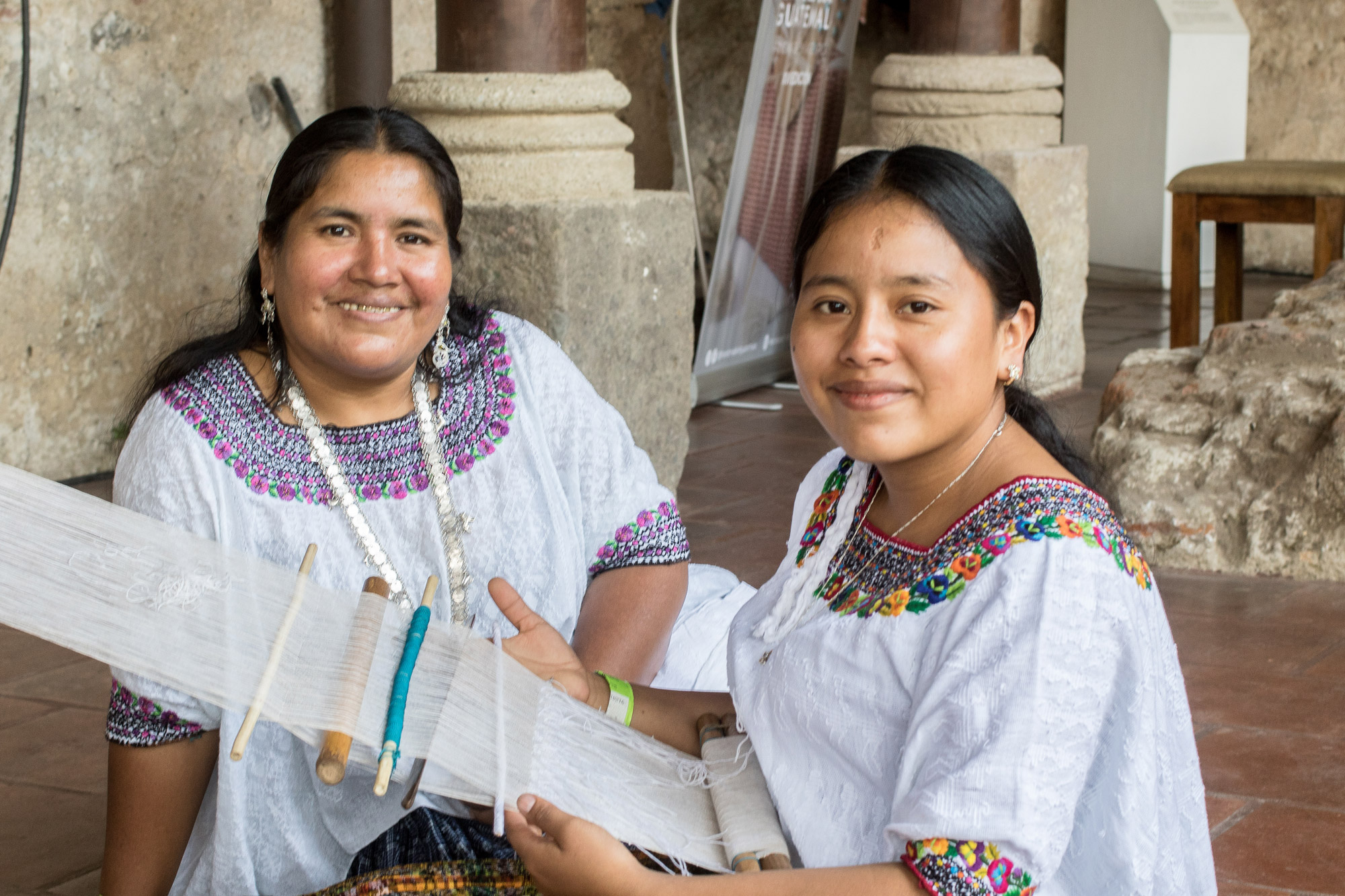Ixbalam Ke Women Weavers

Artisan Organization: Ixbalam Ke Women Weavers
Country: Mexico
Born July 7, 1977, Amalia Gue learnt to weave when she was eight years old. Today she is the president of the Group of Women Weavers Ixbalam Ke. She tells us the story of how the Group came to be through her limited command of Spanish. She speaks Q'eqchi, one of the many Maya languages and also the name of this community. It is one of the "co-official" languages of Guatemala.
"The group began to take shape in 2002, when a volunteer from the Peace Corps brought a group of tourists to visit our community, and they were fascinated by the quality and style of weaving. One of these tourists, the one that showed more interest, asked a lot of questions, like what did white represent, and why we did we weave? We could only tell her that this type of weave is representative of our region, and that it is something we have inherited from our families.
"We decided to call our group Ixbalam Ke because it means Lord of the Moon, but also, splitting the words, Ix means Woman, balam means moon, and Ke means new. And so 25 women got together under this name to start on this new adventure.
"This type of weave is worn on the traditional huipiles (skirts, dresses) from the Cobán area, and it is predominantly white. It is known as Pikbil de Cobán, and its woven on back strap looms. These weaves are characterized by floral or animal openwork patterns inspired by the region's wildlife.
"Prior to weaving, the women treat the cotton threads with nixtamal, which is prepared with corn and lime to make the threads thicker and sturdier. Weaving a standard size shawl can take up to a week, and it is finished off by hand, braiding the fringe into elaborate patterns.
"All the women in my community know how to weave. We've all grew up around looms. A girl begins to learn how to weave when she is eight years old, and she is taught little by little how to use the back strap loom when she comes home from school.
"I remember the first piece I wove, it was a small napkin and I was so happy when I finished it! I remember my mom being proud of it too. In my community, when a girl finishes her first weave she takes it as an offering and places it on the altar of the Church of the Calvary, so she may be blessed as a weaver for the many years and weaves to come.
"In 2004 we formalized our legal status as a Group, but we really didn't know much about anything. We hadn't studied, we didn't know what quality meant. We had never worried about the dimensions of a certain piece because the only thing we had ever woven were our own huipiles to wear, and so everyone's size was different. That same year we managed to obtain a special training program from a government institution, and they taught us all about high quality and about shawls, scarves, napkins and placemats, and the dimensions for each one. This training course lasted about a year and since then it has been the foundation on which we base our weaves.
"It also allowed us to teach more women and make our Group bigger. Now there are 65 of us!
"We work with white threads as a symbol of how near our land is to the sky and the clouds. It is a land of mountains and valleys. Our designs are inspired by the beauty that is all around us.
"What makes our products special is the amount of time it takes us to weave, but also the love and dedication that goes into the coordinated dance between arms and threads.
"I have a dream: that as a Group we get to sell our products to people in other countries. I would also like it if more women joined our Group because they can benefit from it. I can proudly say that all of our children are is school right now, and they are getting the best education they deserve thanks to our efforts as weavers and the support we get from the group."


